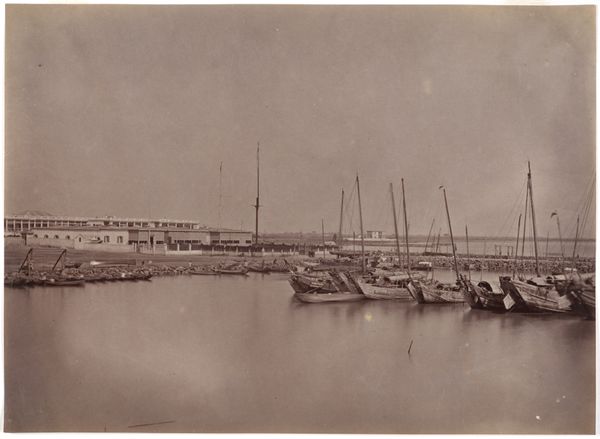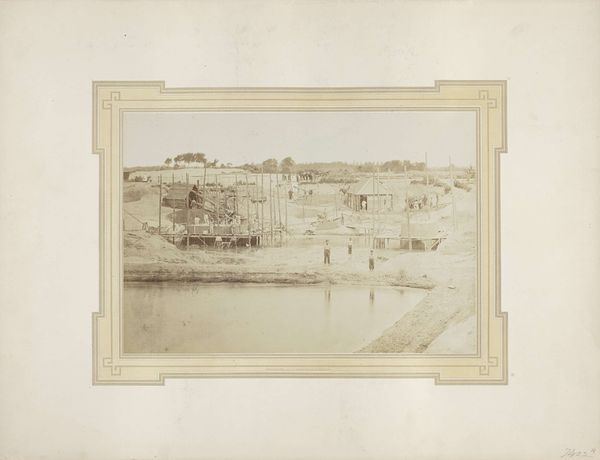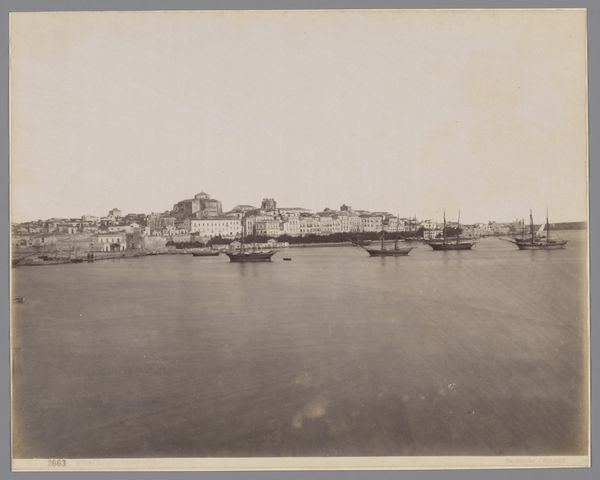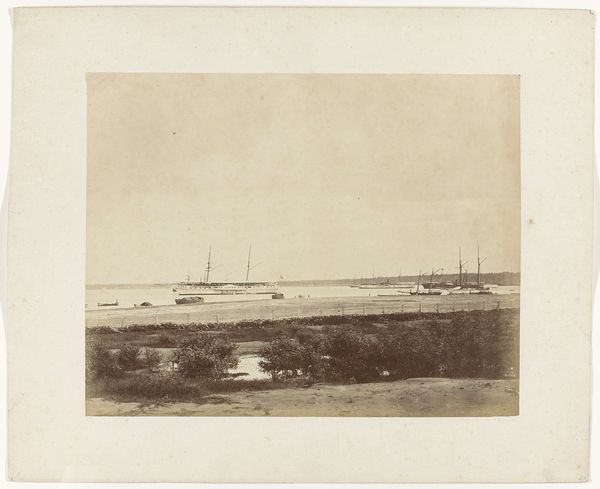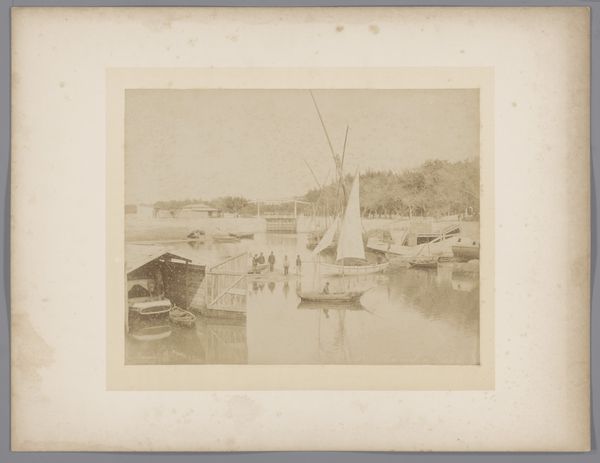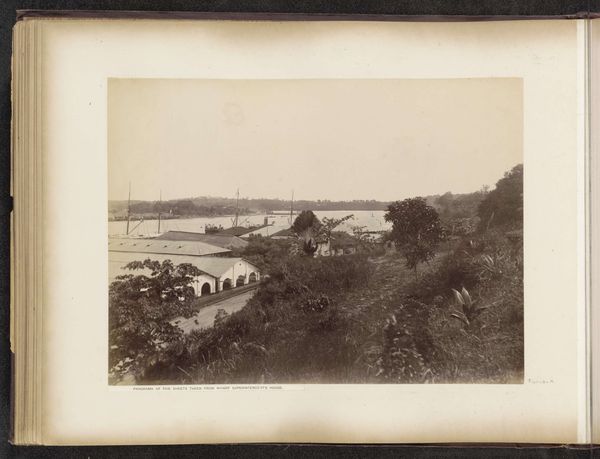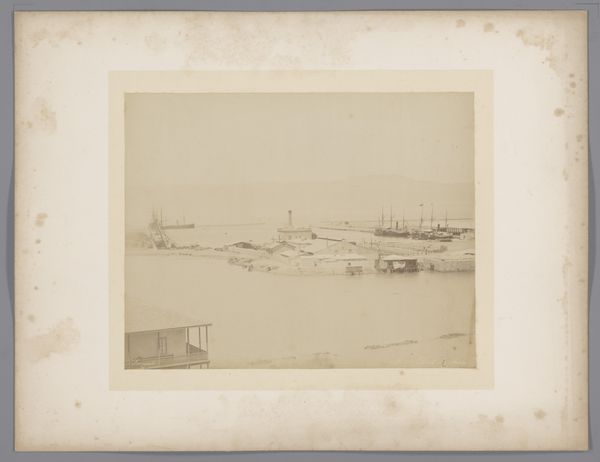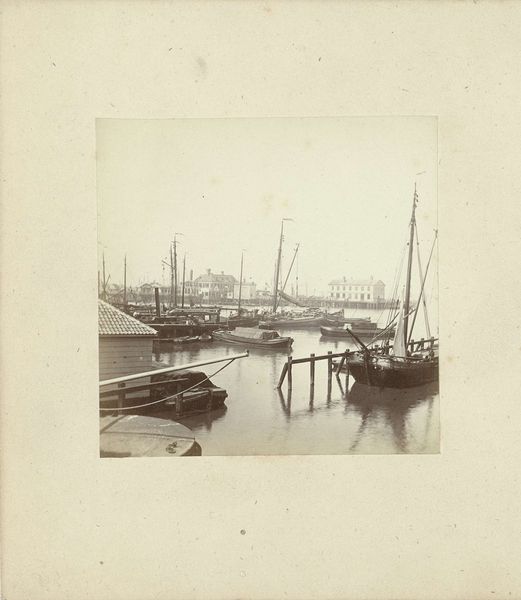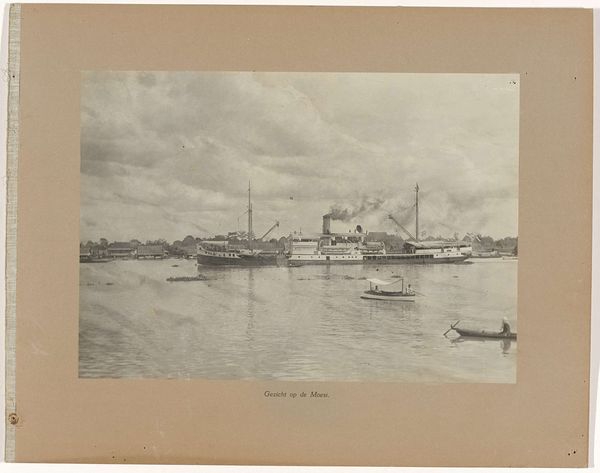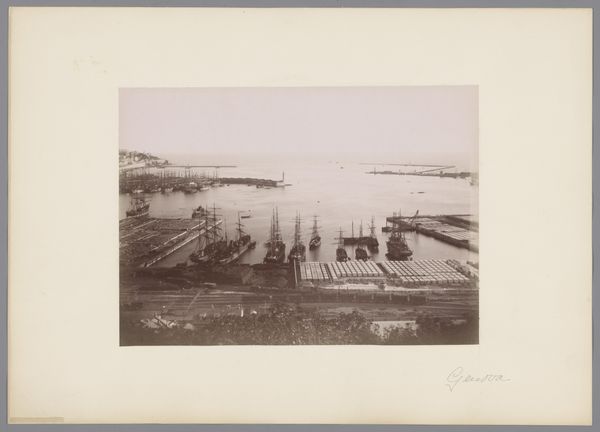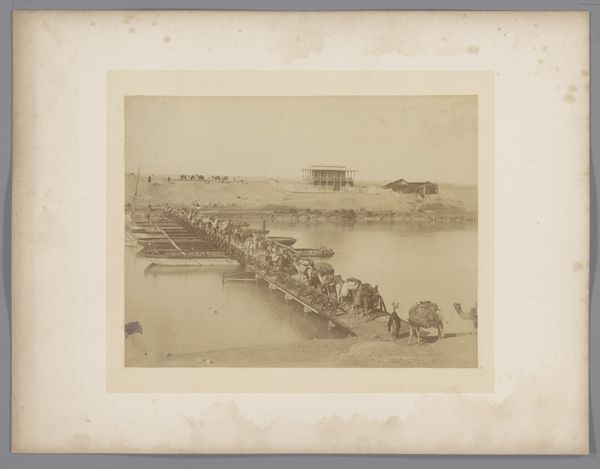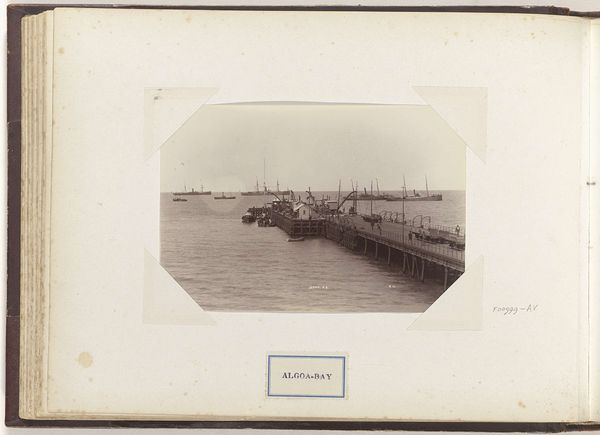
Gezicht op de kades, scheepshellingen en gebouwen van de Singapore slipway and engineering Company Limited in Tanjong Pagar before 1905
0:00
0:00
photography, gelatin-silver-print
#
landscape
#
photography
#
orientalism
#
gelatin-silver-print
#
cityscape
Dimensions: height 265 mm, width 360 mm
Copyright: Rijks Museum: Open Domain
Curator: I'm immediately drawn to the stillness in this image, a gelatin silver print. There’s something quite serene about it. Editor: Let's contextualize that initial reaction. We are looking at an image titled, "Gezicht op de kades, scheepshellingen en gebouwen van de Singapore slipway and engineering Company Limited in Tanjong Pagar," attributed to G.R. Lambert & Co., dating from before 1905, and currently held at the Rijksmuseum. Curator: And knowing the title enriches the viewing experience! The subdued tonality certainly reinforces that calmness. How does the interplay of water, sky, and industrial structures speak to you, formally? Editor: Formally, the photographer used the wide expanse of water to emphasize the structures on the shore. The composition highlights the scale of the Singapore Slipway, showing the industrial intervention in this landscape, the very human act of shaping resources and landscape for enterprise. What kind of labor do you imagine occurring in this place, prior to the widespread development of this technology? Curator: It’s intriguing to think about. I mean, photographs from this era, presented often as detached observation, invariably served the goals of empire. This photo served as visual evidence of colonial enterprise. Note that by naming the engineering company within the very title of this work, we are observing labor in a specifically capitalistic moment of industry. Editor: The medium of photography plays its role, doesn't it? The gelatin silver print—how does that affect your viewing? Curator: The silver gelatin printing process itself lends to the perceived realism and “objectivity." It solidified the Western view of labor. I think that impacts its aesthetic reading even today, and how that links to capitalism in a new historical period of globalization. The sky feels hazy. It makes me think about environmental impact and consumption even back then. Editor: Interesting observation; perhaps an early consciousness toward industrial labor's negative affect. Though not immediately present in the crisp image, that sense of environmental degradation is haunting to discover. Curator: It changes the mood and the composition once you know its name and production place. Editor: Indeed. Visual analysis only gets us so far; it's the connection to labor and materials that truly gives the photograph meaning.
Comments
No comments
Be the first to comment and join the conversation on the ultimate creative platform.
